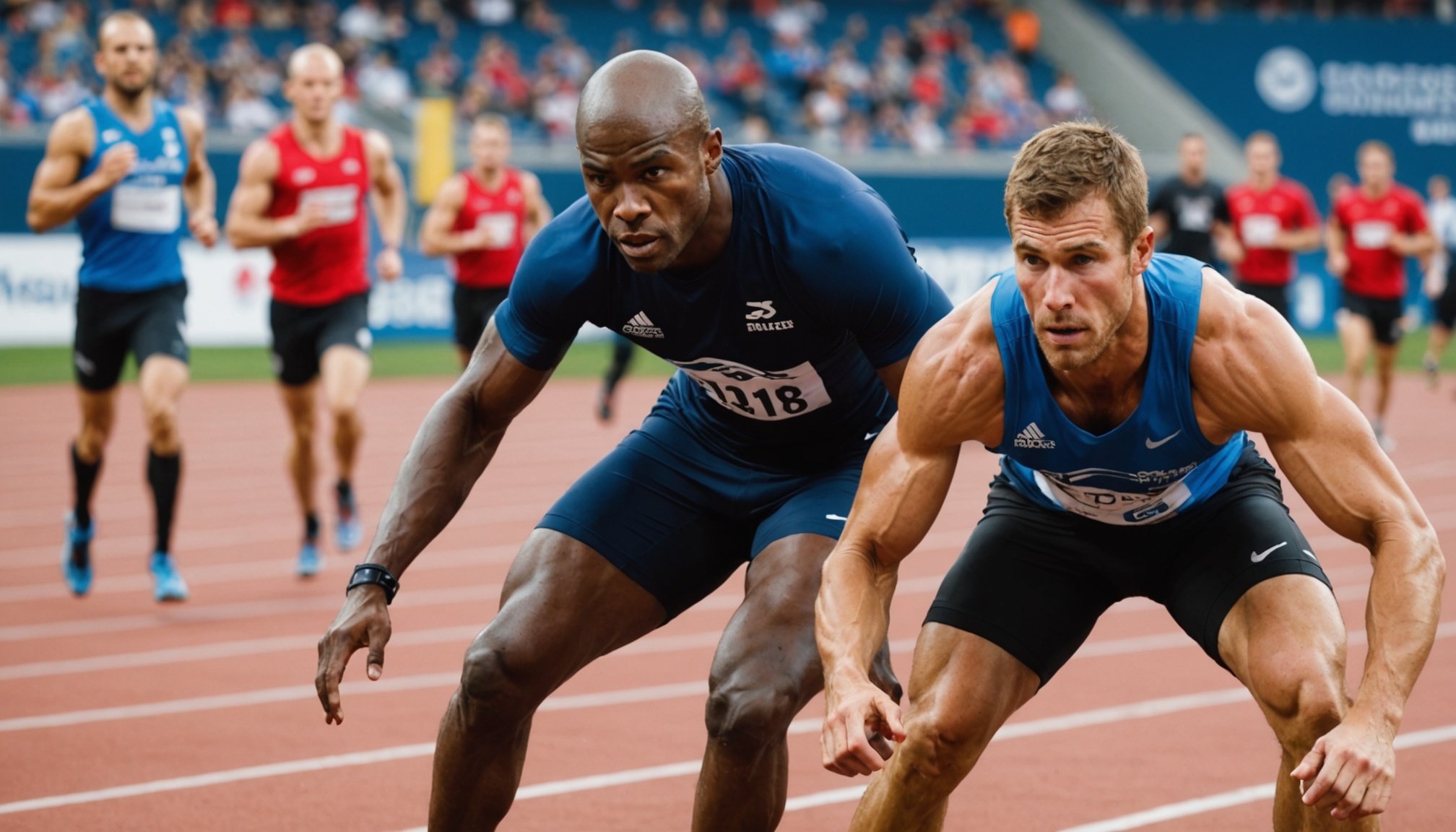Top Recovery Strategies for Athletes: Maximize Your Performance After Intense Competitions
When it comes to athletic performance, the importance of recovery cannot be overstated. After intense competitions or rigorous training sessions, how you recover can significantly impact your body’s ability to heal, adapt, and perform at its best. Here, we will delve into the top recovery strategies that athletes can use to maximize their performance and ensure long-term success in their sports.
The Importance of Active Recovery
Active recovery is a method that involves maintaining a low to moderate level of physical activity after an intense effort, rather than remaining completely immobile. This approach has several key benefits.
In the same genre : Unlocking the Advantages of Cross-Training for Professional Tennis Athletes: Boosting Performance and Endurance
Improving Blood Circulation
Active recovery enhances blood circulation, which helps eliminate metabolic waste accumulated in the muscles during intense exercise. This accelerates the recovery process and reduces muscle soreness, known as delayed-onset muscle soreness (DOMS)[1].
Maintaining Joint Mobility
Light activities such as walking, swimming, or cycling at low intensity help maintain joint mobility and prevent muscle stiffness. This is particularly beneficial for endurance athletes who engage in sports like running or cycling[1].
Also read : Unlock your trail potential: essential hiking tips for all
Strategies for Active Recovery
Gradual Warm-Up and Cool-Down
Before and after each training session, gradual warm-up and cool-down phases are essential. These include dynamic stretching and joint mobility movements to activate the muscles and increase flexibility. A good warm-up reduces the risk of injury by loosening tendons and ligaments, while an adequate cool-down aids in recovery by reducing muscle inflammation[1].
Specific Muscle Strengthening
Adopting a targeted muscle strengthening program focused on often-neglected muscles is crucial. Working on muscles like the abductors or the posterior chain strengthens joints and improves stability, thereby reducing the incidence of injuries. This approach is particularly useful for athletes involved in contact or high-intensity sports[1].
Methods of Active Recovery
Fractionated Training
Fractionated training, also known as interval training, involves alternating phases of intense work with phases of active recovery. This method improves cardio-respiratory capabilities, increases maximum aerobic speed (VMA), and facilitates fat loss while increasing muscle mass. For example, 8-second sprints followed by 12-second active recovery periods can be highly beneficial[1].
Water Immersion
Water immersion, whether in a cold bath or a pool, is an effective active recovery method. Cold water reduces inflammation and muscle soreness, while warm water improves blood circulation and relaxes the muscles.
| Method of Recovery | Advantages | Examples of Application |
|---|---|---|
| Fractionated Training | Improves cardio-respiratory capabilities, increases VMA, facilitates fat loss | 8-second sprints followed by 12-second active recovery periods |
| Water Immersion | Reduces inflammation and muscle soreness, improves blood circulation | Cold bath or pool |
| Foam Rolling and Massage | Reduces muscle adhesions, improves blood circulation | Daily use of foam roller or massage sessions |
| Gradual Warm-Up and Cool-Down | Reduces risk of injury, improves flexibility | Dynamic stretching and joint mobility movements |
Customized Recovery Plans
Every athlete is unique, with different training intensities, body types, and genetic factors. Therefore, a personalized approach to recovery is essential.
Individualized Assessments
Customized recovery plans start with specific assessments, including mobility tests, muscle imbalance evaluations, and injury histories. These assessments generate a tailored recovery plan for each individual[3].
Customized Nutrition
Athletes have varying nutritional requirements, and a customized nutrition plan is crucial. This plan ensures the right proportion of proteins, carbohydrates, and nutrients necessary for muscle repair and to reduce the incidence of injuries[3].
Technology Integration
The use of devices and tracking tools helps monitor an athlete’s progress and modify the recovery plan accordingly. AI-powered recovery systems can analyze an athlete’s metrics in real-time and adjust the recovery plan based on muscle fatigue, stress, or lack of sleep[3].
Mental Recovery Strategies
Mental recovery is just as important as physical recovery, especially for athletes who face high levels of stress and pressure.
Stress Management and Mindfulness
Stress management through meditation, breathing exercises, and cognitive techniques can reduce stress and anxiety associated with injuries and lengthy recovery periods. Positive visualization and goal setting also play critical roles in guiding athletes towards a successful recovery[3].
Pre-Competition Recovery Tactics
The period leading up to a competition is crucial for recovery. Here are some strategies to consider:
Tapering Your Training
Reducing training volume before a competition is essential. Studies suggest that a reduction of 40 to 60% in training load can lead to optimal performance. For example, for a 10K run, one might reduce training volume to 50% one week before the event, followed by a further reduction to 40% in the final week[2].
Choosing Low-Impact Activities
Activities without impact or braking, such as cycling or swimming, are recommended to preserve energy levels while allowing the body to recover. For trail runners, adding elliptical, stepper, or incline walking on a treadmill can be beneficial[2].
Practical Insights and Actionable Advice
Here are some practical tips and advice to help athletes integrate these recovery strategies into their routine:
-
Hydration and Nutrition: Adequate hydration and appropriate nutrition are vital for recovery. Ensure you maintain optimal hydration levels before, during, and after exercise, and consume a balanced diet rich in proteins, carbohydrates, and essential nutrients[1].
-
Sleep: Adequate sleep is crucial for muscle recovery and overall athletic performance. Aim for 7-9 hours of sleep each night to help your body repair and adapt[3].
-
Compression Garments: Wearing compression garments can help improve blood circulation and reduce muscle soreness. However, their effectiveness can vary, so it’s important to find what works best for you[3].
-
Foam Rolling and Massage: Regular use of foam rollers or massage sessions can reduce muscle adhesions and improve blood circulation. Incorporate these into your daily routine, especially after intense training sessions[1].
Examples and Anecdotes
Many professional athletes swear by these recovery strategies. For instance, elite runners often use water immersion as part of their recovery routine. After a grueling marathon, immersing in cold water can significantly reduce muscle soreness and inflammation.
Recovery is not just a passive process; it is an active and integral part of an athlete’s training regimen. By incorporating strategies such as active recovery, customized nutrition, mental recovery techniques, and pre-competition tapering, athletes can maximize their performance and ensure long-term success in their sports.
As Laurent Bosquet’s meta-analysis highlights, “arriving under-trained rather than over-trained” is often the key to optimal performance. By understanding and implementing these recovery strategies, athletes can ensure they are always at their best, ready to take on the next challenge with full vigor and resilience[2].
In the words of a seasoned athlete, “Recovery is not just about resting; it’s about actively helping your body heal and adapt. It’s the difference between being good and being great.” By embracing these top recovery strategies, you can take your athletic performance to the next level and achieve your goals with confidence and consistency.






